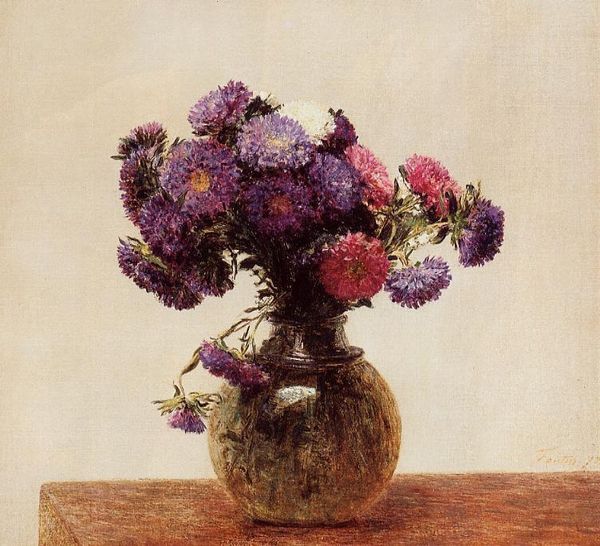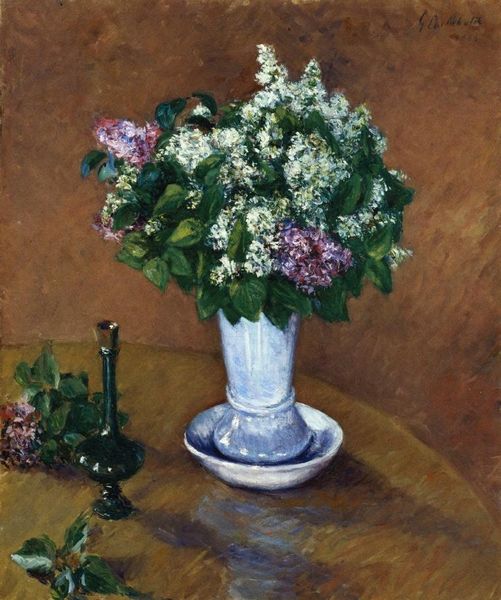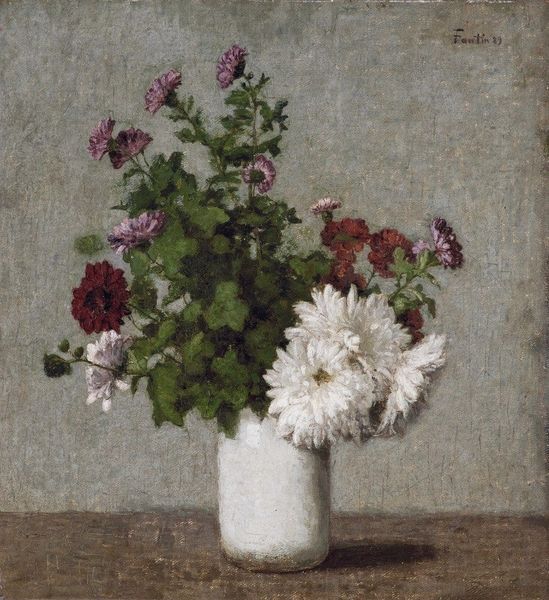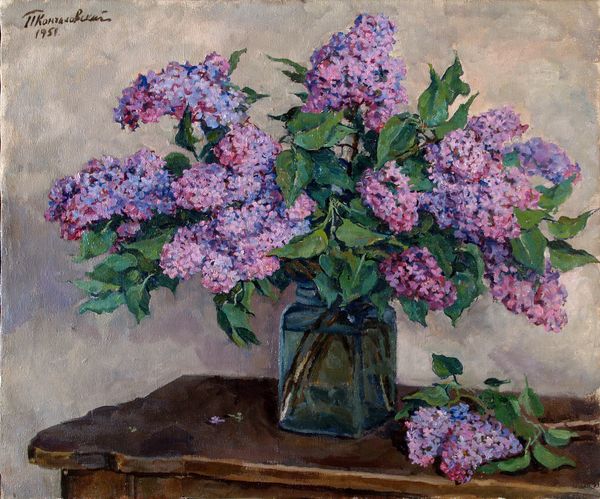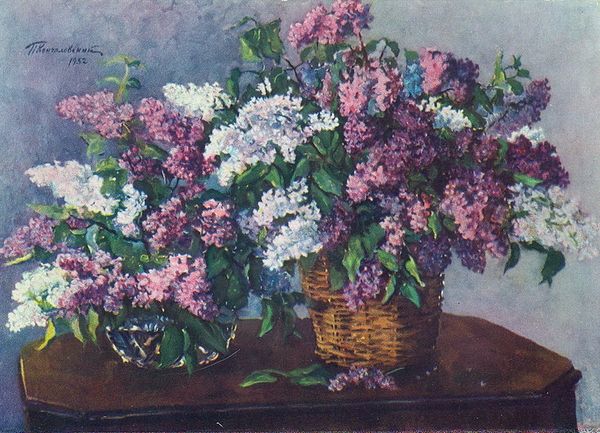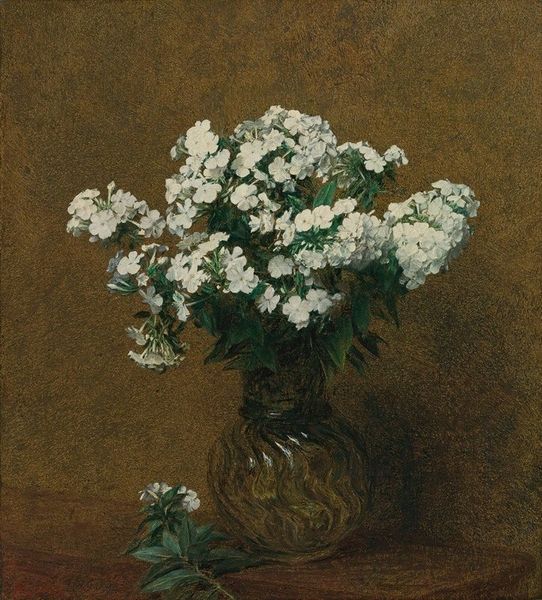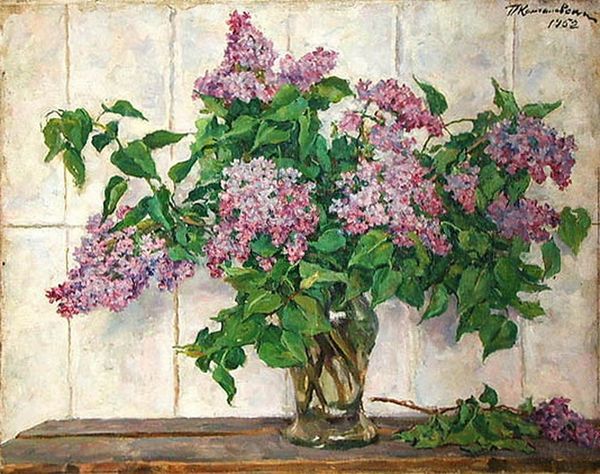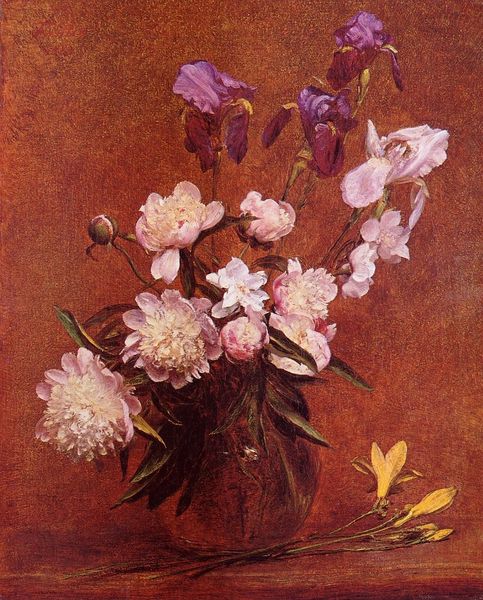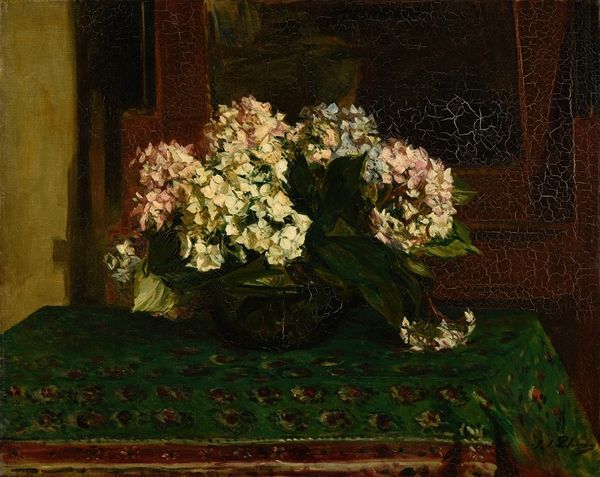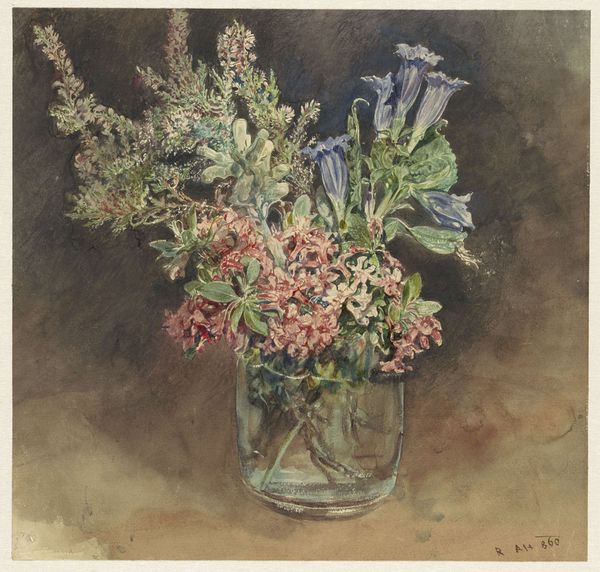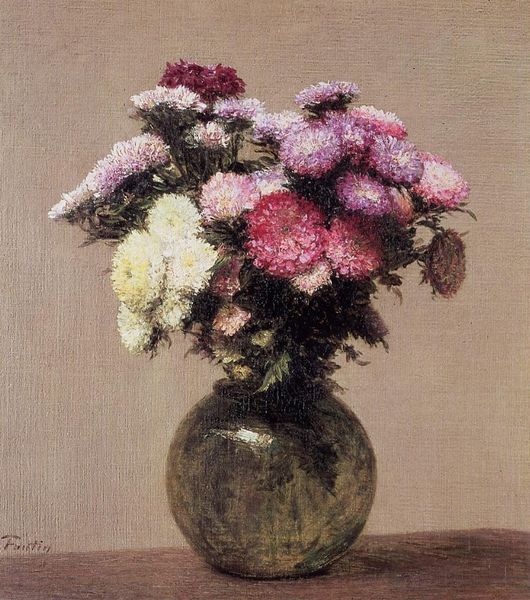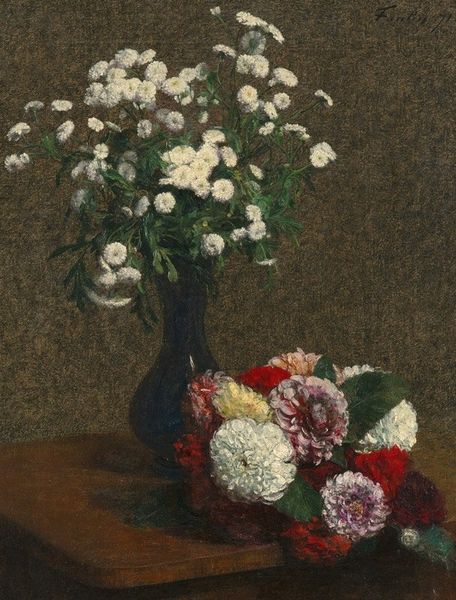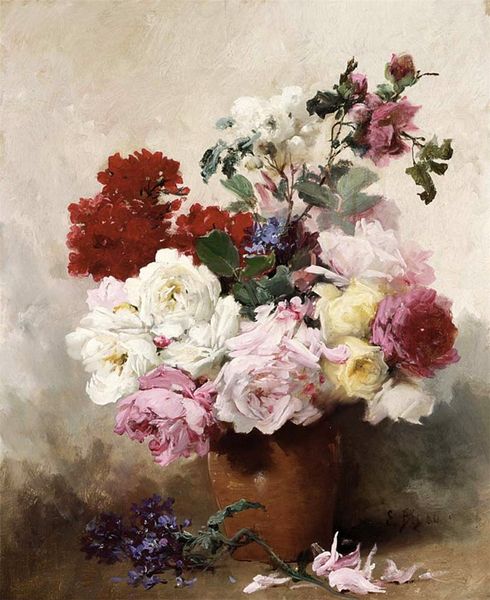
painting, oil-paint
#
gouache
#
painting
#
impressionism
#
oil-paint
#
oil painting
#
watercolour illustration
#
watercolor
Copyright: Public Domain: Artvee
Curator: Standing before us, we have Henri Fantin-Latour’s "Lilas," painted in 1872. Editor: It's beautiful. So soft and gentle, with those lilacs looking like hazy puffs of purple and green against the muted backdrop. Curator: Precisely. Fantin-Latour was fascinated with flower painting, creating a booming market with middle-class patrons keen to demonstrate their good taste and their horticultural enthusiasm, which blossomed throughout Europe in the mid-19th Century. He actually sold many works like this to British collectors and dealers. Editor: So, this delicate floral arrangement really spoke to Victorian sensibilities, its creation and sale providing the artist with an income, connecting him with specific commercial markets. But formally, look at the subtle rendering of light on the glass vase and how the flowers soften the light as it comes in from above and reflects on the wall behind. The textural contrast between the blooms, leaves, vase, and surface—the very formal choices—that's where the beauty truly sings. Curator: Absolutely. The composition itself underscores this idea. A relatively simple subject, elevated by technical mastery but brought down-to-earth, and within reach of the market’s middle classes. One notices how Fantin-Latour meticulously reproduced botanical form but also produced images of great commercial and emotional impact for people invested in domesticating the wild. Editor: Still, I find it’s the artist’s compositional structure—how those masses of clustered flowers sit within a space defined by careful modulations of value and tone. He transforms everyday materials into something of significant beauty. That focus, that close and keen observation of form, elevates this still life beyond its original purpose. Curator: It certainly gives us insight into the art market, society and class of its day. A complex interplay of economics and artistic vision, perfectly captured on canvas using watercolor, gouache, and oil paint. Editor: Yes, and for me it’s a reminder of the power of artistic technique to make the everyday into something enduring and, truthfully, unforgettable.
Comments
No comments
Be the first to comment and join the conversation on the ultimate creative platform.
